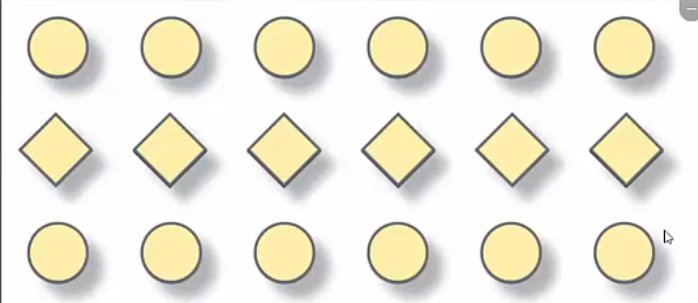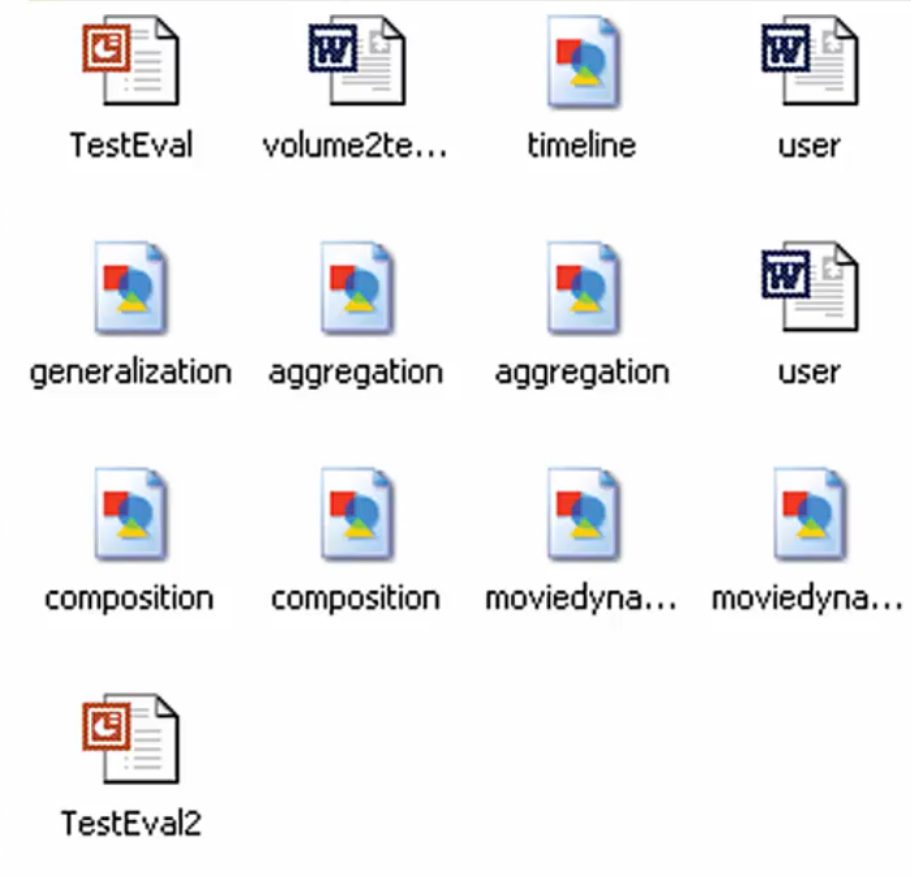Perception and Navigation¶
Perception¶
Perceptual set: Our previous experiences that makes us experience depth and patterns in a particular way.

Depth perception¶
Critical in the design of 3D applications
How we understand depth:
Primary cues
- Retinal disparity (two separate images)
- Stereopsis (image combining process)
- Accommodation (muscular process to create image focus)
- Convergence (muscular process for image focus on short distances)
Secondary cues (2D plane, monocular)
-
Light and shade
-
Linear perspective
-
Height in horizontal plane
-
Motion parallax
-
Overlap

-
Relative size
-
Texture gradient
Pattern recognition¶
Based on our perceptual set
Gestalt laws of perception
Psychology terms
-
Proximity
-
"Elements that are positioned close together are belonging together"

Two separate groups of stars -
Continuity
-
"We tend to perceive smooth, continuous patterns rather than disjoint, interrupted ones."

-
Similarity
-
"Similar figures tend to be grouped together."


- Closure
- "Closed figures are perceived more easily than incomplete (or open) figures"
- "Images that are not complete that nevertheless provides a complete image"

Affordance¶
"The affordance of the environment are what it offers animals, what it provides or furnishes, for good or ill" - Gibson
So, an affordance is a resource that the environment offers an animal and...
...the animal must possess the capabilities to perceive and use the resource.
"It is perceived affordances that tell the user what actions can be performed on an object and, to some extent how to do them" - Norman
Examples¶

Salt and pepper shaker. We know through our perceptual set, that we use more salt than pepper in European countries, so the one with more holes is for salt.

There being only plates but no door handles provides the affordance, that we need to push the door. Through our perceptual set.

This is a juice presser. But that is not clear from the leftmost picture. The affordance of this product is unclear.
Navigation¶
Object identification
- Identifying categories and clusters of objects
Wayfinding
- Working out how to reach a destination
Exploration
-
Understanding what exists in an environment
-
How objects are related
Three types of signs:
- Informational signs (object identification)
- Directional signs (wayfinding)
- Warning and reassurance signs (exploration)
Informational signs¶
Orienting oneself (Passini 1994)
Providing information on objects
Aid in object identification and classification of objects
Directional signs¶
Choosing the correct route (Passini, 1994)
Providing information on routes and route hierarchies
Apple Guidelines:
- Provide one path for one destination
- Make the path logical
We need to provide a clear visual hierarchy

Warning and reassurance signs¶
Monitoring chosen route (Passini, 1994)
Recognizing when the destination is reached (Passini, 1994)
Providing feedback on actual location
Providing information on possible actions within the environment
Apple Guidelines:
- Provide markers of where you are
- Traceability